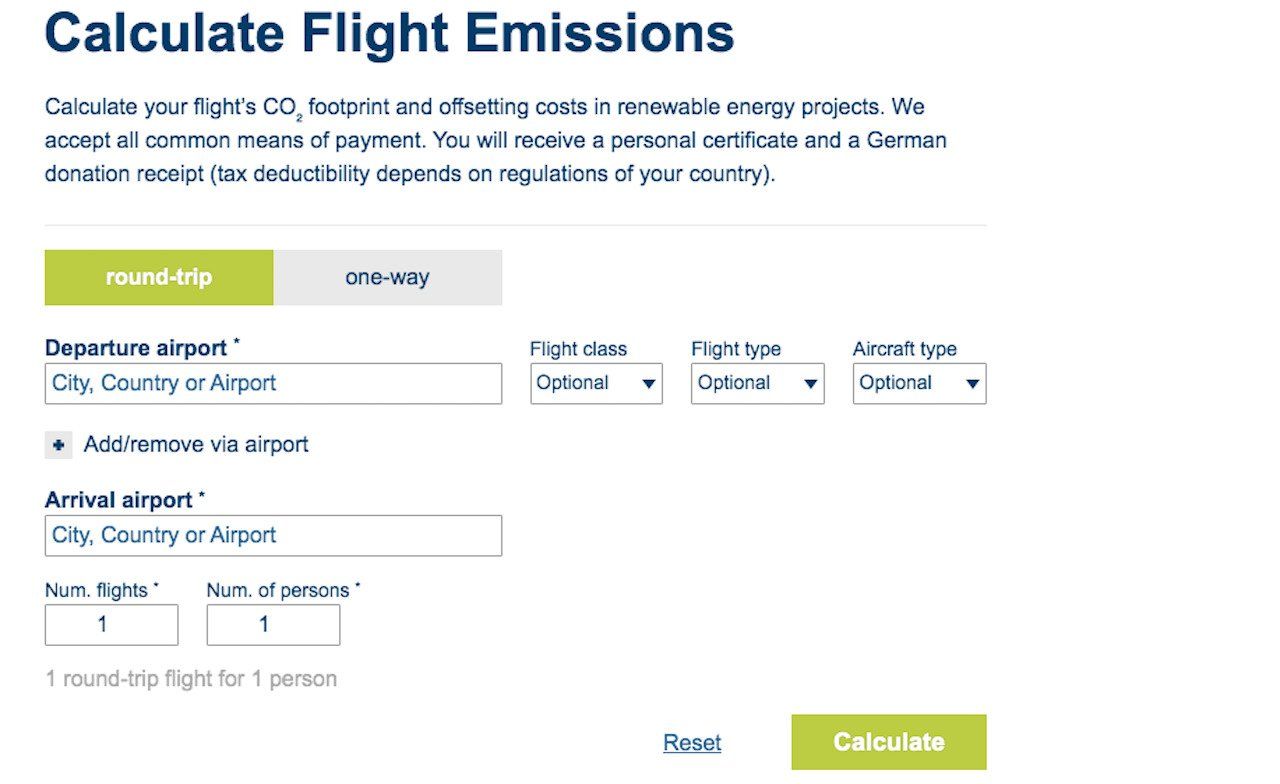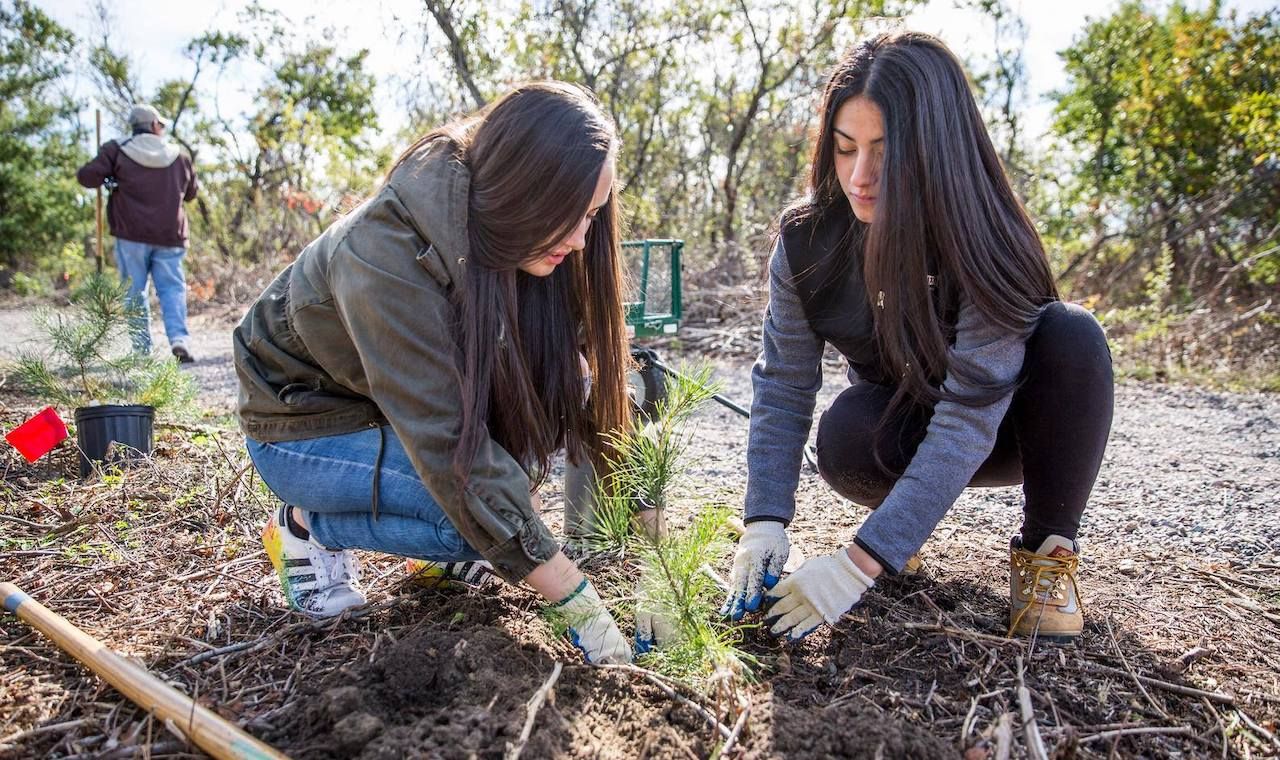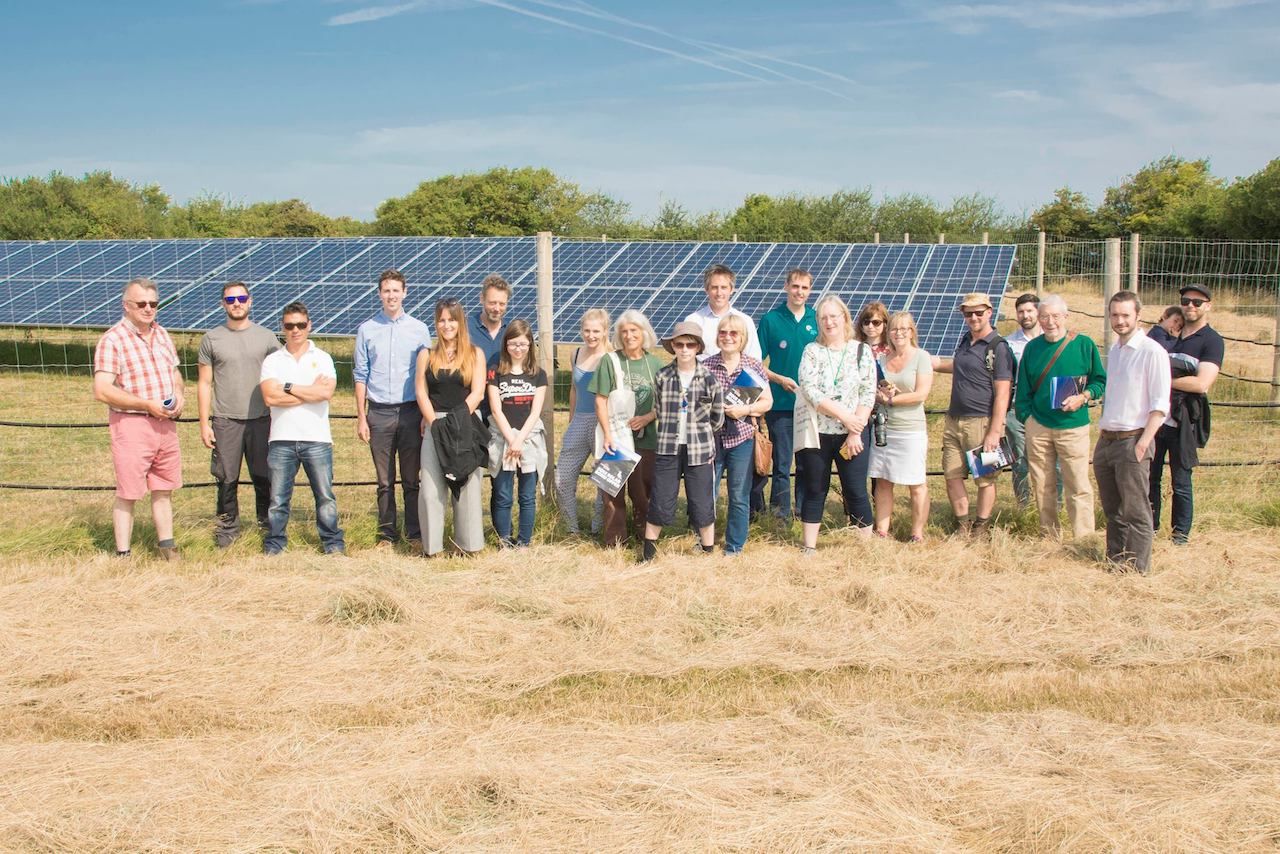As climate change becomes an increasingly important issue to travelers, green travel options are surfacing to ensure people can continue to travel guilt-free. From outdoor adventure companies whose tours are dependent on nature and pristine landscapes to airlines and independent companies that offset carbon emissions from flights, travel operators are taking initiatives to help minimize or neutralize the carbon footprint they produce on tours or in transit. Whether you’re flying to your next outdoor adventure trip, a weekend getaway, or commuting for a business trip, these tools and airlines are taking on the challenge of going green and have made environmentally conscious decisions even easier for travelers.

How Frequent Flyers Can Offset Their Flight Emissions
1. Apps that offer offset programs

Photo: CarbonFreeTravel
The easiest way to neutralize carbon emissions from flying is to use an app that offers an offset program. These apps usually calculate the carbon emissions produced on a flight by having travelers enter their departure and arrival destinations. Once the app calculates the carbon emissions as a result of the flight, the app then suggests an amount of money to donate or invest in certified programs and projects that are focused on green energy or environmental efforts. Three of the top apps that provide this service are CarbonFree Travel, offCents, and CarbonBuddy.
CarbonFreeTravel offers users three green energy investment options after calculating their carbon footprint: solar, wind, or hydroelectricity. These green energy projects are independently certified by some of the highest standards across the globe. Each program is backed by the United Nations’ Clean Development Mechanism or World Wildlife Fund’s Gold Standard. Each investment is roughly the price of a drink from Starbucks, making it a solution everyone can live with while doing good for the environment.
offCents actively tracks your transportation and the carbon emissions produced from your travel. Using this data, the app then calculates and suggests a sum to purchase a carbon offset or voluntary emission reduction. It supports projects and initiatives that range from landfill gas capture and reforestation to methane capture and renewable energy sources.
Finally, CarbonBuddy tracks and calculates carbon emissions for individuals, but also for business and events. CarbonBuddy’s curated options for offset investments also help stimulate local economies by focusing on small-scale renewable energy projects that are both local to the company in Hawaii and international. Those who choose to use the app can browse all of the options and educate themselves on the programs before selecting one to invest in.
2. atmosfair

Photo: atmosfair
Though atmosfair offers the same opportunities to invest in projects and programs to offset carbon emissions from travel, this resource also provides so much more to travelers. It serves as a guide to help travelers choose an airline based on each airline’s green practices and carbon emissions. It also offers solutions for both leisure and business travelers. Those traveling for pleasure can find green tourism operators and travel offers while corporate travelers will find an entire guide for their green travel needs. From an airline index to green meeting solutions, atmosfair is a complete resource to green solutions for every type of traveler.
3. Delta’s offset program

Photo: Devan King/The Nature Conservancy/Facebook
In 2007, Delta was the first airline to launch a carbon offset program in the United States. Customers can make a financial contribution when purchasing a ticket or directly to The Nature Conservancy. Miles can also be donated to the organization. The Nature Conservancy supports a few projects that focus on ending deforestation as well as promoting alternative energy solutions. From the reforestation of Chile’s southern coastline to more than 20,000 acres of forest in southwestern Virginia, The Nature Conservancy’s efforts are focused both domestically and internationally. Delta has a carbon emissions calculator on its website and suggests donating roughly $10 for a cross-country flight.
4. British Airways’ Carbon Fund

Photo: Pure Leapfrog/Facebook
In partnership with Pure Leapfrog, British Airways created its first passenger carbon offset program in 2011, the Carbon Fund, which benefits energy projects based in the United Kingdom. Travelers can choose to donate to low carbon, energy efficiency or renewable energy projects in the United Kingdom or Africa when booking on British Airways’ website. With Pure Leapfrog managing donations to British Airways, the funds are contributed to community-based projects that reduce carbon emissions and provide social impact. These projects have included installing solar panels on school roofs, LED lights on community buildings, and installing a biomass boiler. In the past seven years, 36 community energy projects have been supported, nearly 400,000 people across the United Kingdom and Africa have been impacted, and more than $3.29 million of “lifetime community benefit” has been generated.
5. United Airlines’ Eco-Skies CarbonChoice program

Photo: Conservation International/Facebook
United Airlines uses a calculator that factors in each season for traveling along particular routes. Depending on the time at which a traveler books a flight, the route, and the project that the traveler elects to support, donations typically range between $7 to $10 for a cross-country flight. Businesses can opt into a specialized program that offers customized emissions reports and easy options for offsetting their carbon footprint. The United carbon offset program, Eco-Skies CarbonChoice, supports projects through its partnership with Conservation International, such as the Alto Mayo Forest Carbon Project, which protects a watershed in Peru for threatened species and more than 200,000 people.